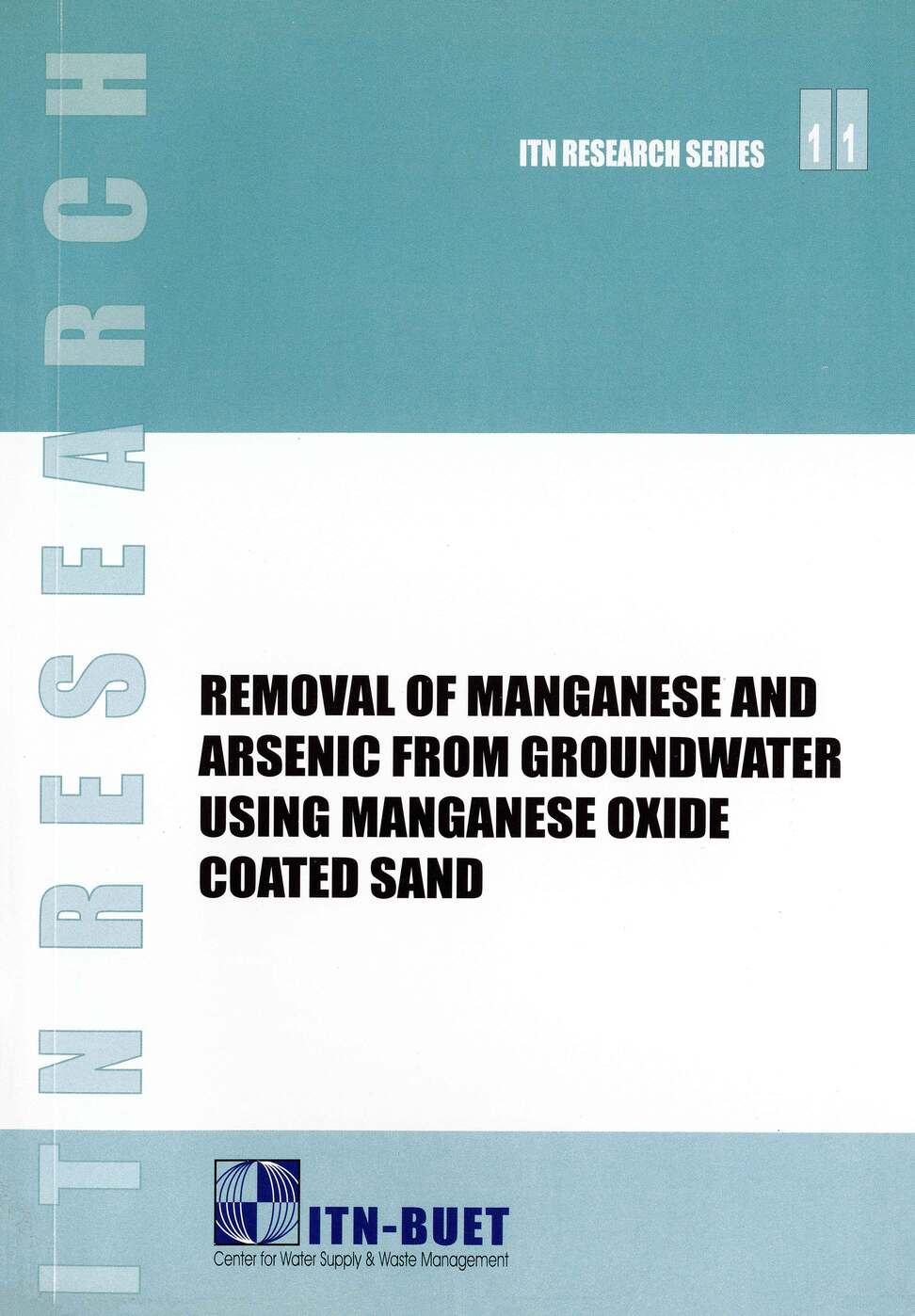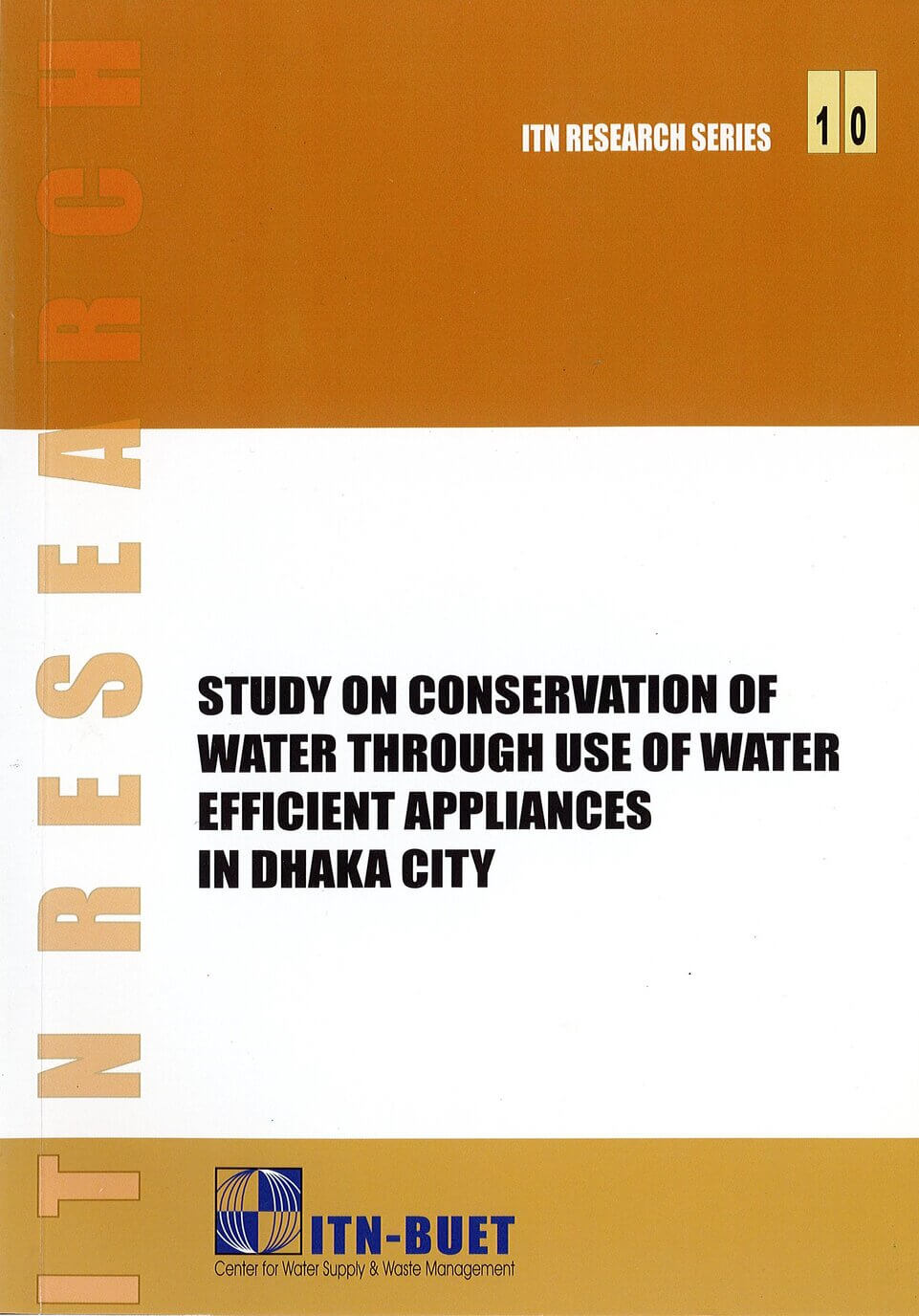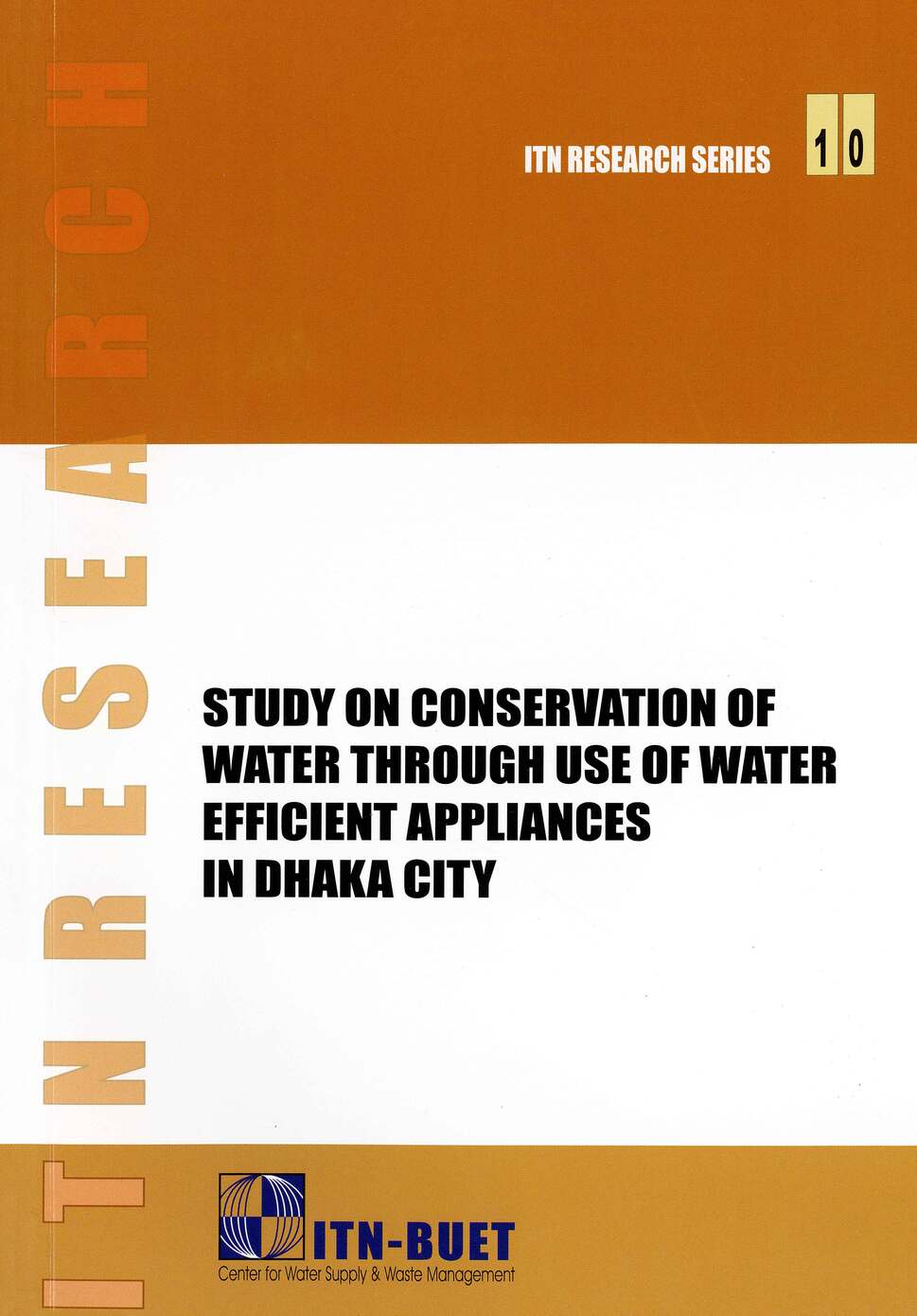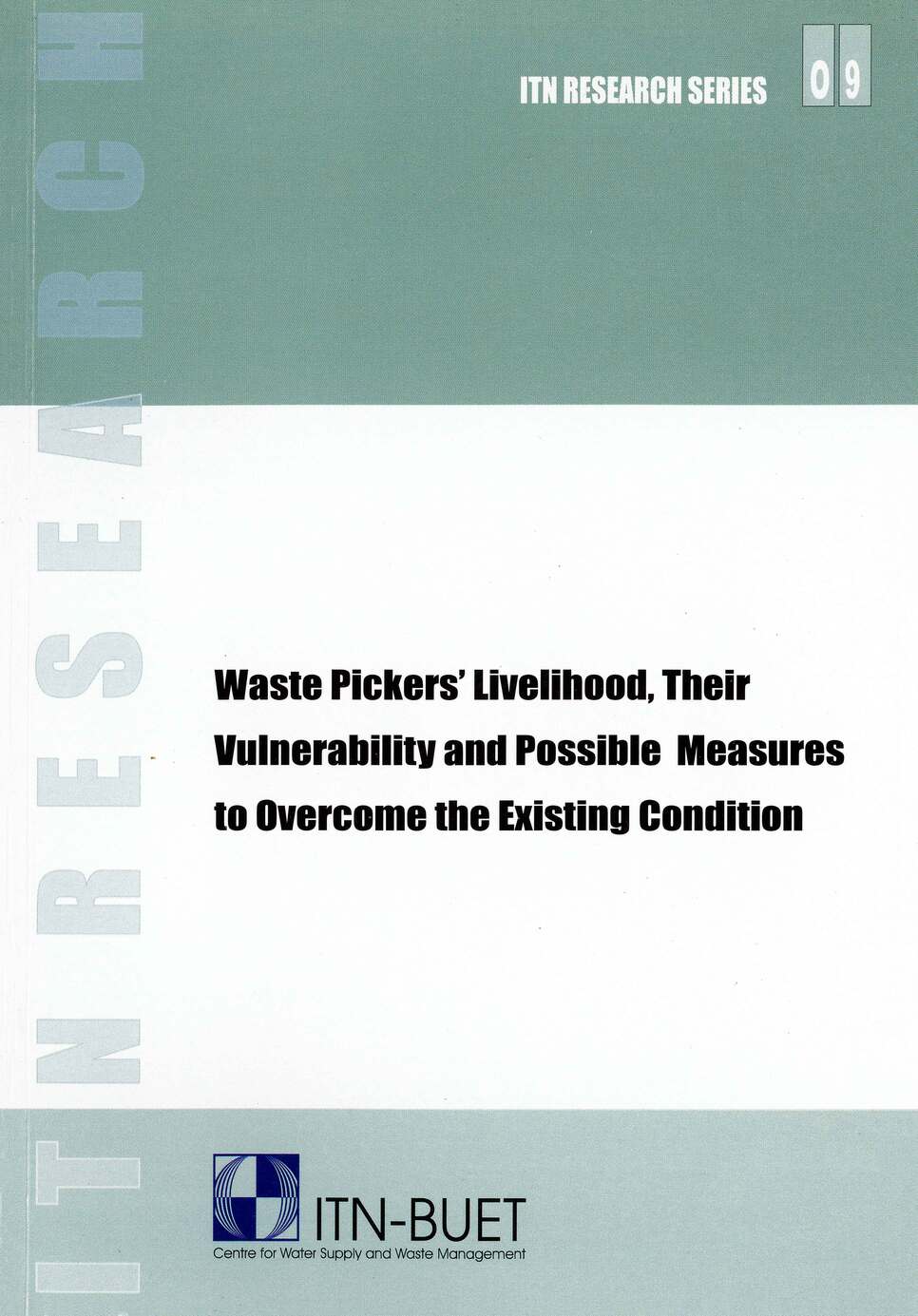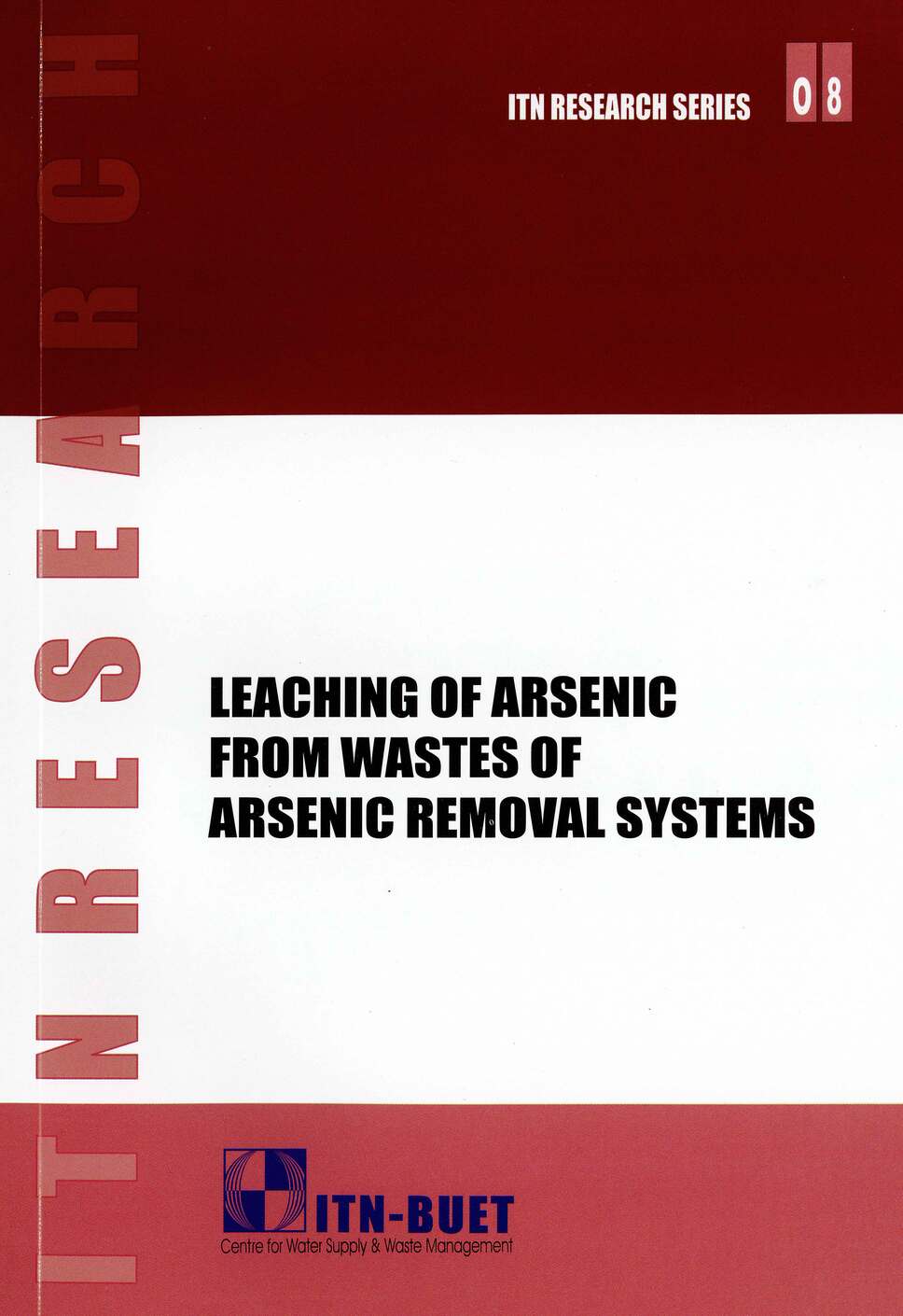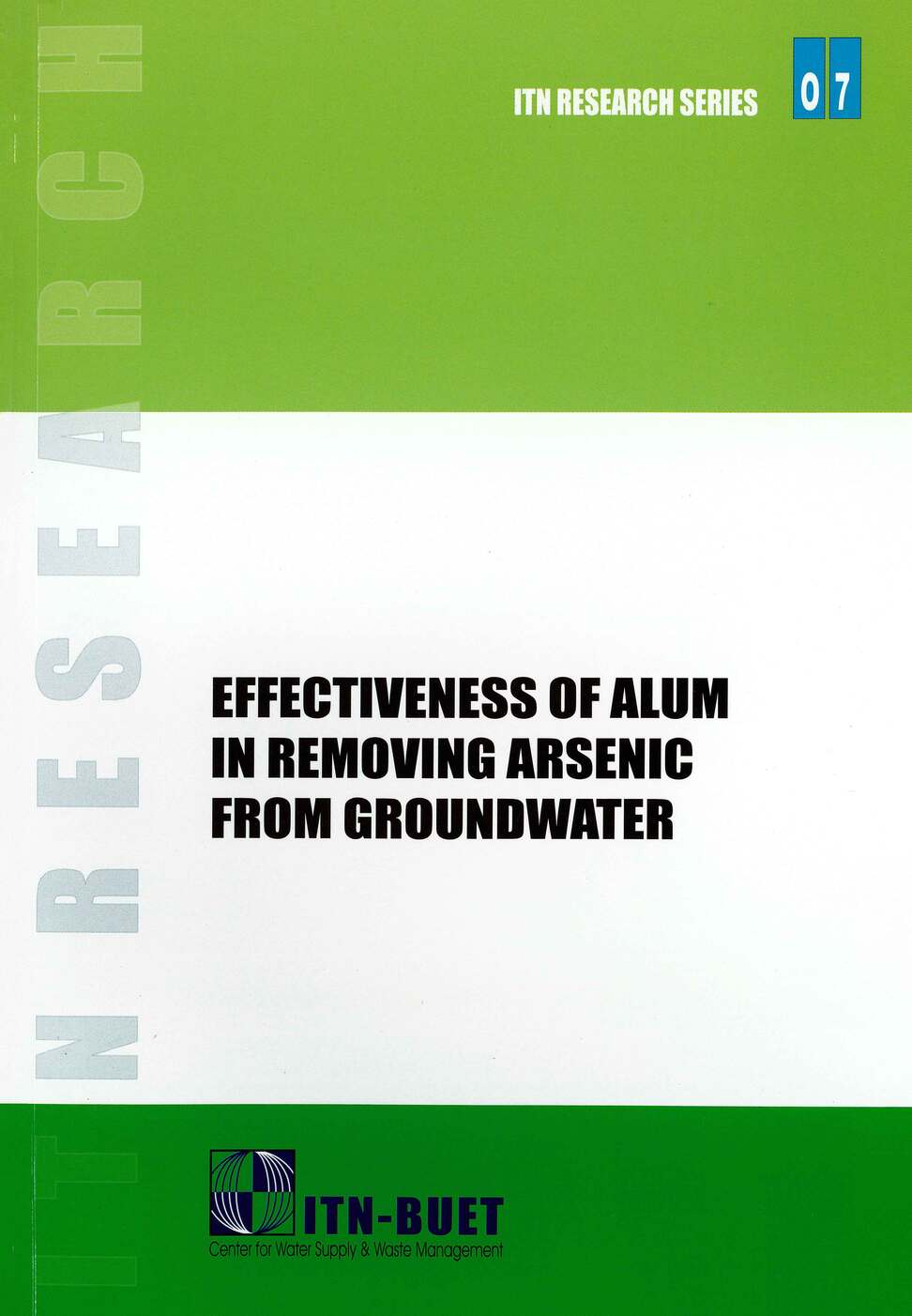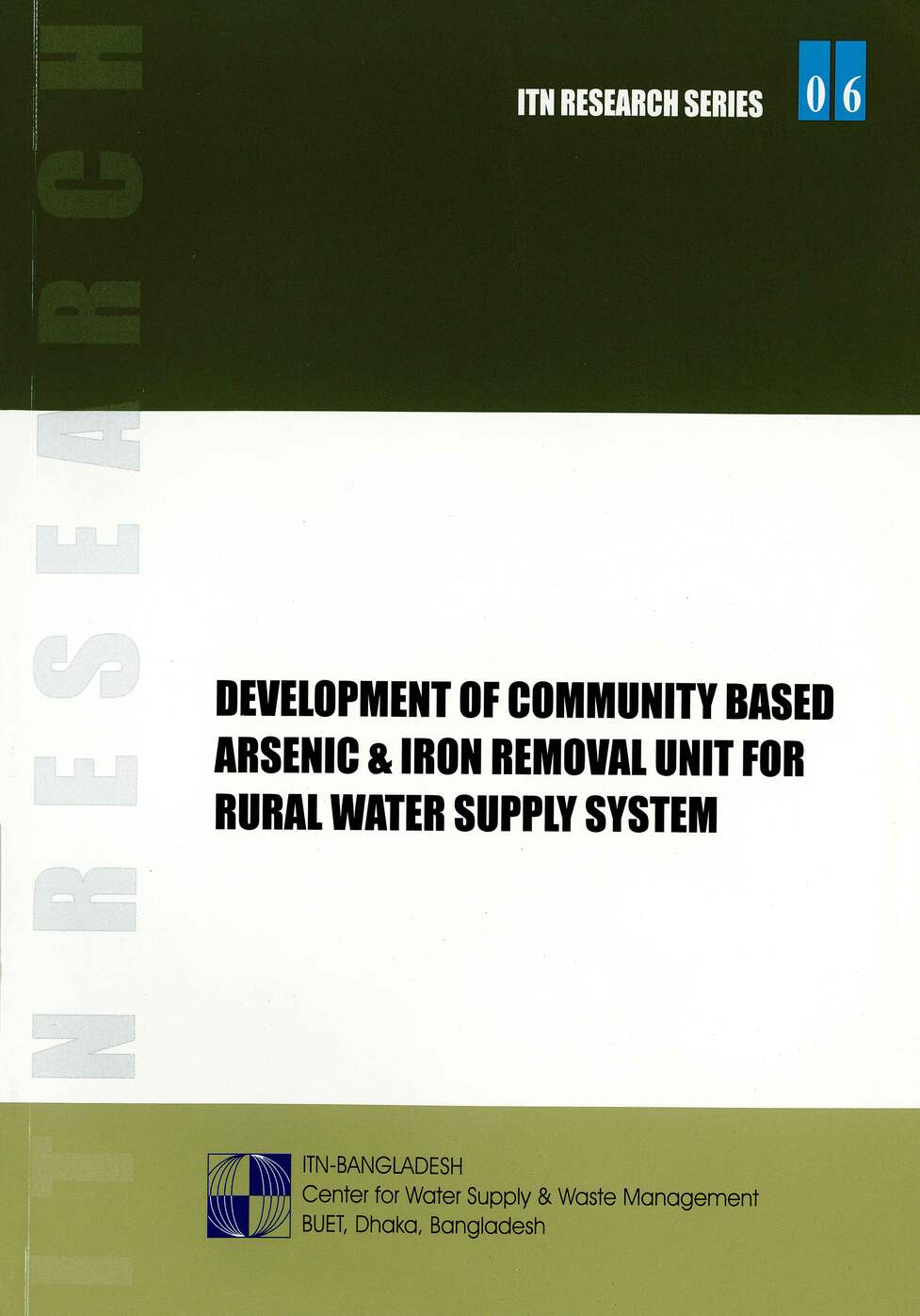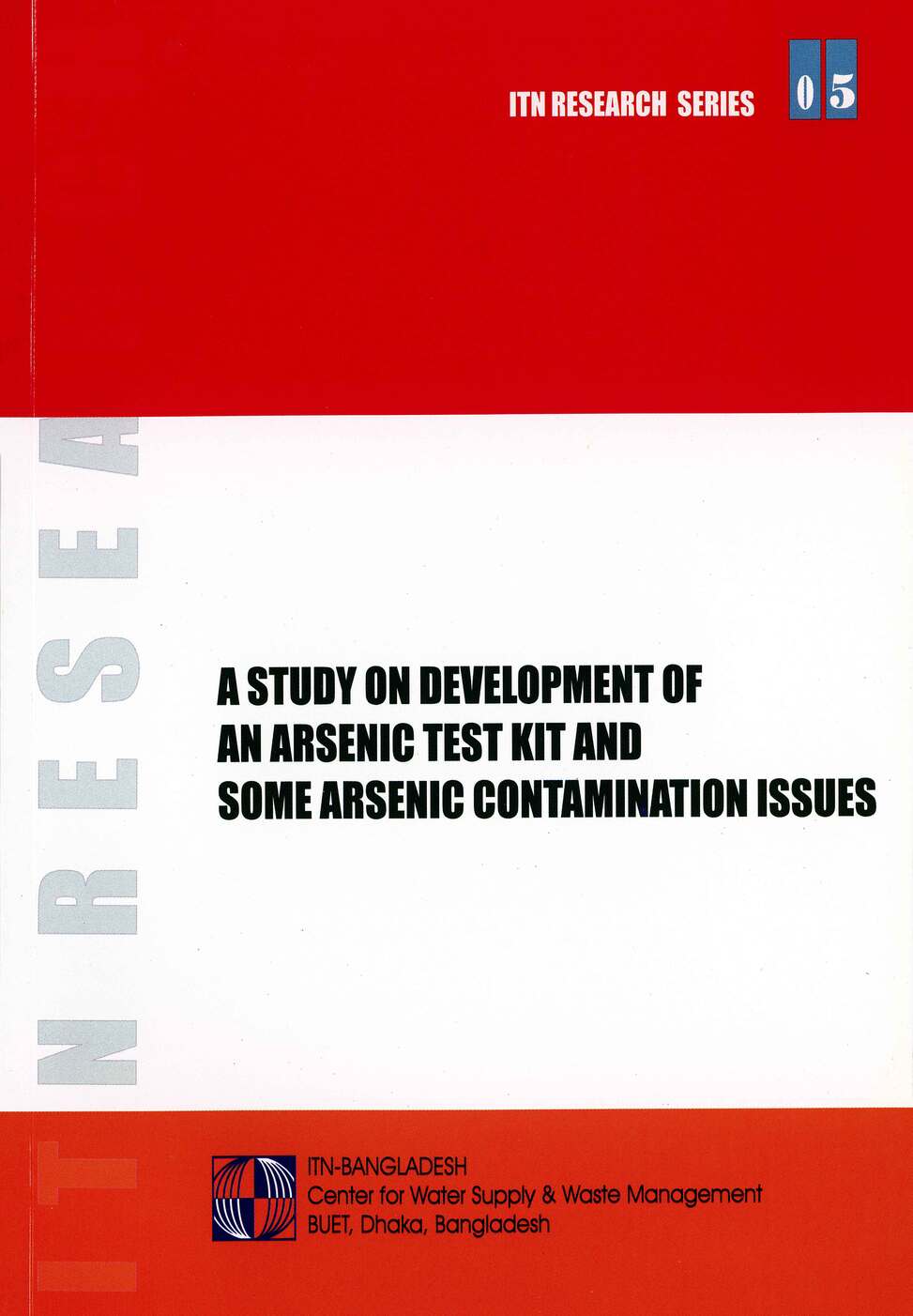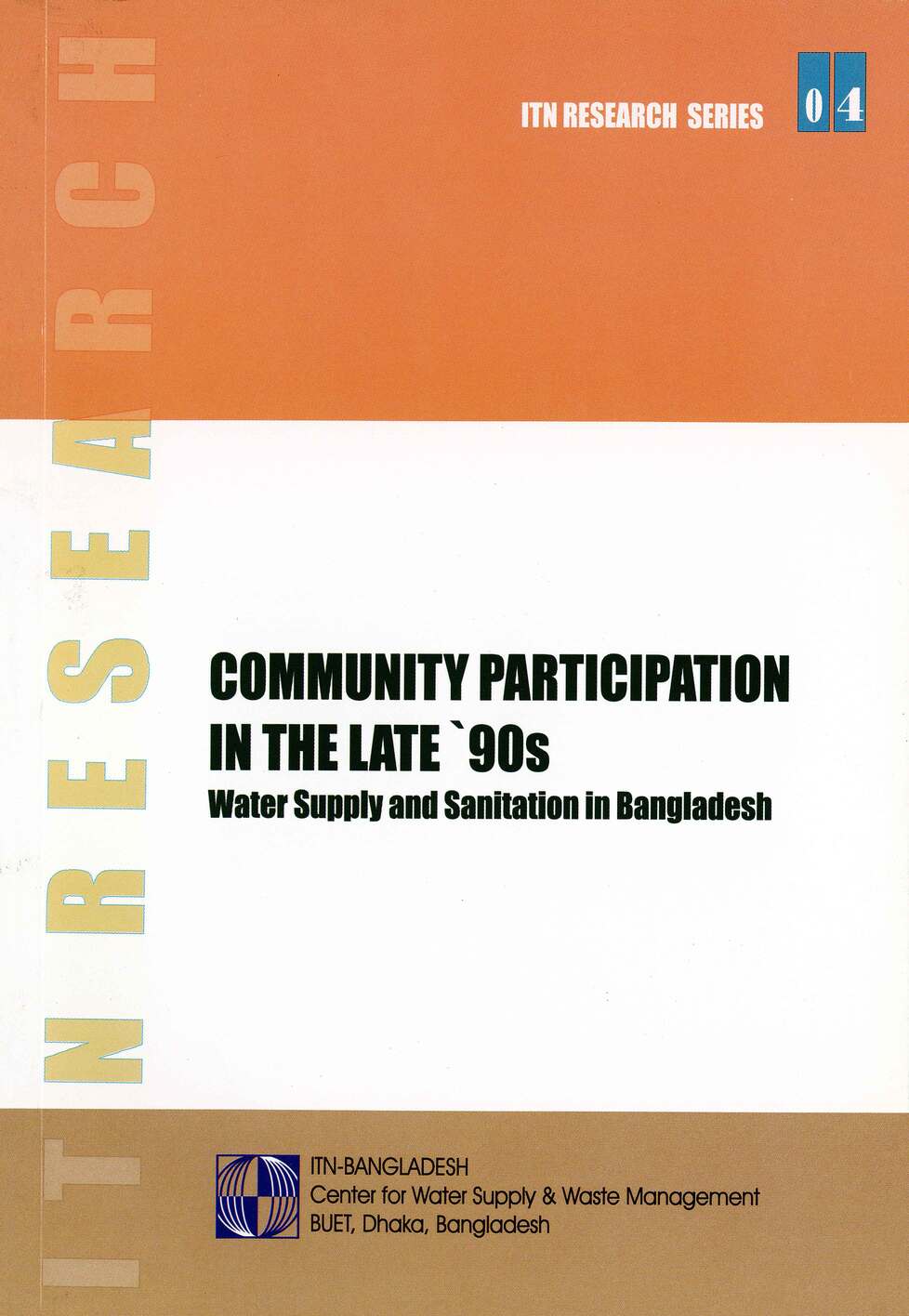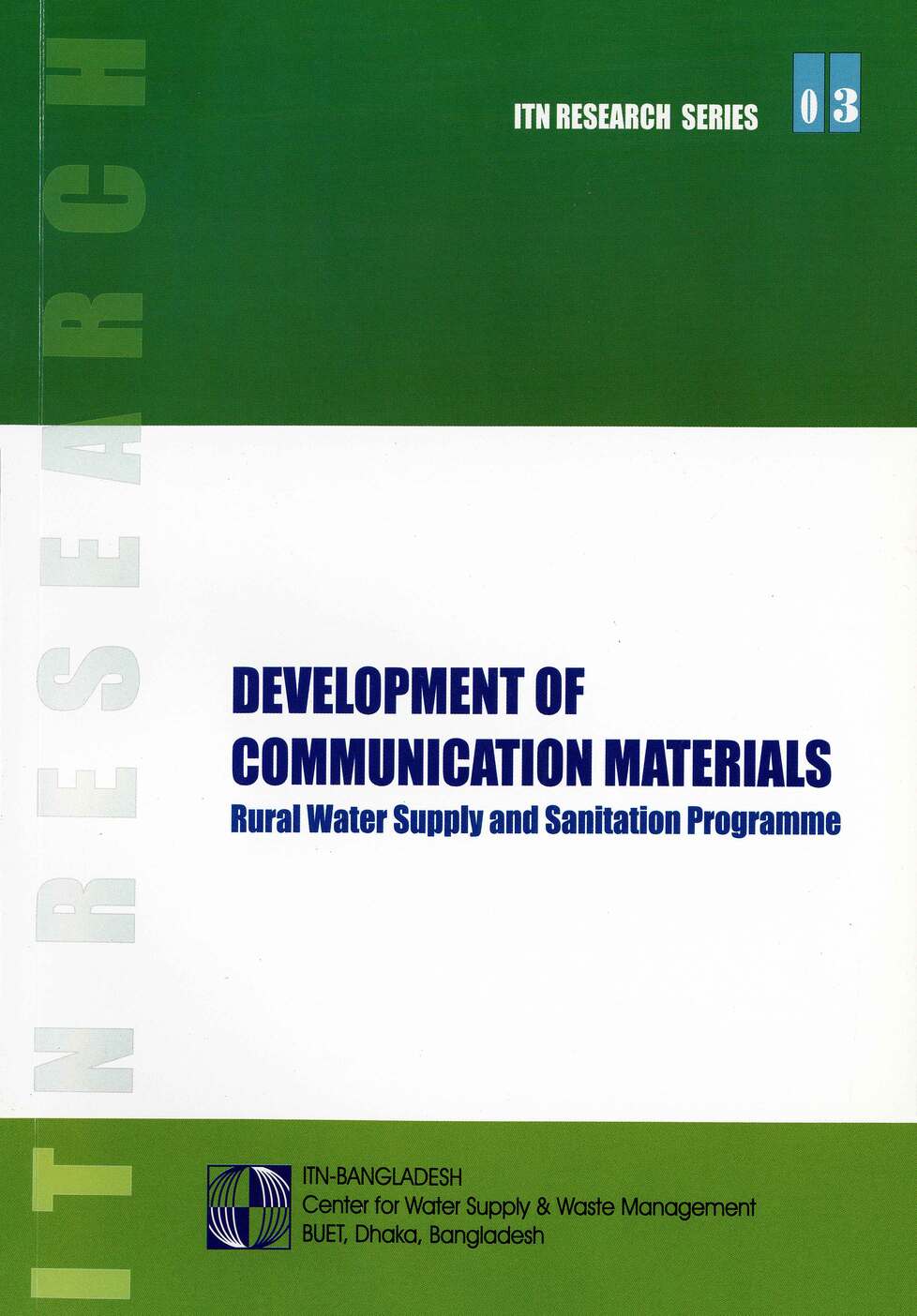Research Series
Removal of Manganese and Arsenic from Groundwater Using Manganese Oxide Coated Sand
Groundwater is a significant source for drinking water in our country. This water is contaminated with various minerals of which arsenic and manganese can be specially mentioned. ITN-BUET has conducted […]
June, 2011
Study on Conservation of Water through the Use of Water-Efficient Appliances in Dhaka City
The shortage of safe drinking water remains a pressing issue for the citizens of Dhaka. While the concerned agencies are making continuous efforts to increase the water supply, it’s imperative to consider demand-side management as well to address this challenge. In this context, the research on ‘Conservation of Water through the Use of Water-Efficient Appliances in Dhaka City’ holds significant importance.
Researcher(s): Md. Mafizur Rahman
June, 2011
Study on Conservation of Water through Use of Water Efficient Appliances in Dhaka City
Shortage of safe drinking water is one of the problems being faced by the citizens of Dhaka. While the concerned agencies are continuously striving for increasing the supply, a demand […]
June, 2011
Waste Pickers’ Livelihood, Their Vulnerability and Possible Measures to Overcome the Existing Condition
ITN-BUET conducted a research on the social aspect of solid waste management titled ‘Waste Pickers’ Livelihoods, their Vulnerability and Possible Measures to Overcome the Existing Condition’ during 2008-09, an area which received very little attention previously for research within the domain of solid waste management. The publication is the outcome of this study.
Researcher(s): Monir Alam Chowdhury, Shafiul Azam Ahmed
First Edition: May, 2010
Leaching of Arsenic from Wastes of Arsenic Removal Systems
Contamination of groundwater with arsenic is considered as a major challenge in the water supply sector of Bangladesh. ITN-BUET has conducted a number of researches on arsenic issue. In continuation of ITN-BUET initiatives, a research on “Leaching of Arsenic from Wastes of Arsenic Removal Systems” was conducted by ITN-BUET during 2001 to 2002. This publication is the outcome of this initiative.
Researcher(s): A.B.M. Badruzzaman
First Edition: May, 2008
Effectiveness of Alum in Removing Arsenic from Groundwater
Contamination of groundwater with arsenic is considered as a major challenge in the water supply sector of Bangladesh. ITN-BUET has conducted a number of researches on arsenic issue. In continuation of ITN-BUET initiatives, a research on “Effectiveness of Alum in Removing Arsenic” was conducted by ITN-BUET during 2001 to 2002. This publication is the outcome of this initiative.
Researcher(s): Md. Abdul Jalil
First Edition: June, 2007
Development of Community Based Arsenic and Iron Removal Unit for Rural Water Supply System
The research focused on development of a community based Arsenic-Iron Removal Unit (AIRU) adopting the technique of adsorption and co-precipitation of arsenic onto the flocs of ferric hydroxide, making use of the naturally occurring iron of groundwater. The operation and maintenance of the developed AIRU are simpler and more users friendly in comparison to the previously developed community based water treatment units. Number of beneficiaries and water consumption was increased by about 10 folds after the installation of the AIRU.
Researcher(s): Farooque Ahmed
First Edition: June, 2005
A Study on Development of an Arsenic Test Kit and Some Arsenic Contamination Issues
A field kit was developed which used non-toxic Silver Nitrate soaked papers as indicator. Adsorption capacities of arsenic by different materials were tested in the laboratory, in which good removal potential was found in Bijoypur clay, bleached sawdust and newspaper pulp.
Researcher(s): Abul Khair
First Edition: June, 2003
Community Participation in the late’90s Water Supply & Sanitation in Bangladesh
Personal and household behaviors and sanitation practices by the majority of the population to a large extent are unhygienic. Program planning whether it be for the installation of a latrine or sinking of a tube-well, it must always take into consideration the needs of the ultimate users and responsibilities must be delegated among the community according to capability and sustainability.
Researcher(s): Afsana Wahab
First Edition: January, 2003
Development of Communication Materials Rural Water Supply and Sanitation Programme
People’s perception about the existing communication materials on rural water supply and sanitation programme has been examined in the study wherefrom the factors influencing the effectiveness of materials have been identified and finally, a set of recommendations has been made towards development of effective communication materials.
Researcher(s): Nazmul Ahsan Kalimullah
First Edition: January, 2003


